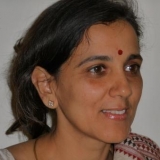Although intentional use of fires to transform land has decreased globally (1, 2), particularly among highly capitalized countries through regulatory and market-orientedapproaches and moral suasion, regulatory strategies have been less effective in southern and eastern Asia (see table S21). Some densely populated agricultural regions in China and India buck the global trend, showing increases in agricultural fires (2). This is particularly true in northwestern India, where rice residue burning makes a substantial contribution to air pollution and short-lived climate pollutants (3, 4). Regulations are in place to reduce agricultural fires, but burning continues because of uncertainty regarding policy implementation and regarding access and returns to alternative technologies. With the field burning season soon upon us, we synthesize emerging evidence on alternatives to burning, clarify the business case for alternative practices, identify remaining uncertainties, and discuss approaches to increase their widespread adoption. Often, there are difficult trade-offs between environmental improvement and profitable economic opportunities. The case of crop residue management in northwestern India does not appear to fit this pattern and provides lessons that may be useful elsewhere.
Fields on fire: Alternatives to crop residue burning in India
EfD Authors
Country
Sustainable Development Goals
Publication reference
Shyamsundar, P., Springer, N. P., Tallis, H., Polasky, S., Jat, M. L., Sidhu, H. S., … Somanathan, R. (2019). Fields on fire: Alternatives to crop residue burning in India. Science, 365(6453), 536–538. doi:10.1126/science.aaw4085


